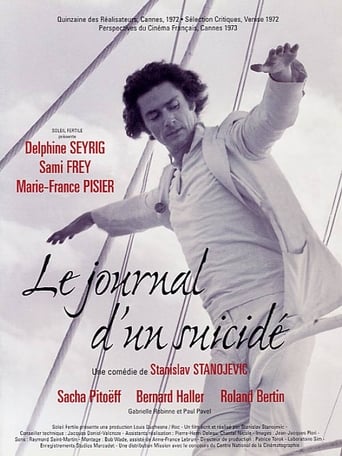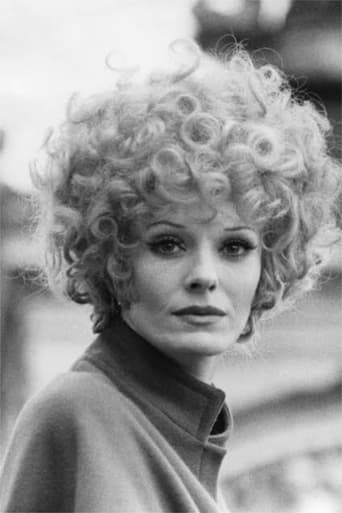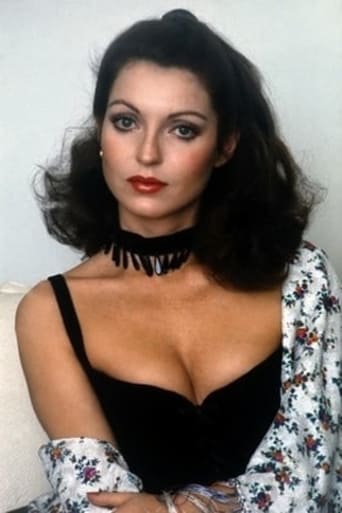

Diary of a Suicide (1973)
On a Mediterranean cruise, a young man hired as a tour guide is intrigued by the beauty of a female interpreter hiding behind her sunglasses. He makes advances to her by venturing into a series of strange stories.
Watch Trailer
Cast


Reviews
Such a frustrating disappointment
A Masterpiece!
There is, somehow, an interesting story here, as well as some good acting. There are also some good scenes
By the time the dramatic fireworks start popping off, each one feels earned.
The "Diary of a Suicide" is visually riveting, lyrical, its faces compelling. Its worldview is transcendent, non-historical, myth-based world--one of alienation, war, torture, anomie, and disorientation. However despite the dead-end despair, the suffering of all the characters, the males ones-- the tour guide, the actor, the jailer--maintain their freedom to control and dominate. These men never cease serving their own interests. In fact, they uphold their subject status through the presence of the women they objectify.The three "brave" male souls living without meaning or values are in many ways meshed together as one. They get to tell the story within the other's story within the other's story. They are the speakers, the viewers, the actors, the possessors. Each is grafted to the same universal world view which permits them to survive off an "other," who isn't responsible for the mess of their world. Their stories may be biased and partial, but they stick, and perpetuate more such stories, because whatever power is left in this futile, and nihilistic world, belongs to men.The ship's tour guide's estrangement, for example, doesn't translate into a passivity around women. He observes, intrudes upon, manipulates, eroticizes, seduces, and mystifies the ship's blond interpreter. He studies her to get to her. He is the knower, she the known, the interest that keeps his manly status intact in the face of his ennui. That she turns out to be disfigured--not a sign of depth as in the one-eyed Einstein--behind her wide sun glasses, offers him one more chance to further his power over her in the form of rejection.The actor fights off the godless world via a powerful ego which is fed by his wife's Edith Piaf-like performances. His very isolation seems to intensify his self-importance as he relates his stories of death, decay, and destruction. And he seems to have an inscrutable connection to the jailer whose suicide appears to directly touch off the death of his own wife.The jailer is more oppressed than the other men. He's a victim of a cruel and pointless war which leaves him with permanent brain damage., and an absolute sleep incapacity. He does have a singular memory--that of the face of a loving prostitute. Yet despite this very specific and passionate vision and despite his anguish and own personal oppression, he has no identification or sympathy with his prisoner. She is someone he observes, someone under his control, as he stands there above her composing his own diary.His suicide itself is as much an act of sadism and murder as it is self-destruction. Since, he makes it a crapshoot as to whom he kills, his terrorized prisoner or himself, it is no wonder, that he kills both himself--and the actor's wife. But the actress' demise does not just replace the lucky anarchist prisoner because now bereft of her 24 hour guard, she will soon be dead herself, and thus be the second death caused by the jailer's suicide.The guide, the jailer, the actor--and the male anarchist, are indeed inseparable. They are joined by their manipulative power over women. They keenly hear each other, but not women--exploiting their listening capacity as they do their bodies. They are both emotionally detached and socially detached--on a ship, a stage, in a prison. But not detached from each other--they may be worlds apart, and yet share the unity of disembodied subjects under the auspices of traditional male power.For sure, women are the listeners to and facilitators of men's language. They are framed out of their stories, existing rather as the scenery, the scenes, and the seen. Their bodies exist merely for sex, voyeurism, and display. Their faces for adoration, allure, and sheer beauty (the anarchist must spend most of her prison day on her makeup). The interpreter, gets to be frigid, the anarchist to be twisted, and the actress to be eviscerated and hysterical. In sum, they get to be projected as death, decay, and disintegration in a world made by and for men.
I took copious notes when finally getting a chance to see this nearly 40 year-old foreign film, but I'll try to keep my review brief: you need to watch this one to capture its flavor. Typical of the experimental movies of the '60s and '70s, it's a take it or leave it, abstract exercise.My favorite French heartthrob Sami Frey is well-cast as a cruise ship tour guide, his long hair flashing in the wind romantically when called for. Though top-billed, lustrous Delphine Seyrig is more of a guest star, as the interpreter aboard ship whom we want Sami to make it with, but in these abstract (dare I say Marienbad genre?) films they merely schmooze.Film is effectively shot in black & white, with many shots and scenes later on presented in a variety of tints, the format of Silent Cinema. There are brief outbursts of color, but the b&w plus monochrome tints dominates.Main story is introduced about three reels into the film, with Marie-France Pisier cast against type as a revolutionary, later imprisoned after a bombing goes awry. Sacha Pitoeff steals the movie as her jailer, a dour but ultimately sympathetic personage with tons of back story and a screen presence that puts his three certified Superstar co-stars to shame. The trendy casting of Delphine, Sami and M-F, all very hot back then, is typical of these Euro experiments (see: Alain Robbe-Grillet, master of the form).It takes forever for the plot strands, flashbacks and coincidences to coalesce, but filmmaker Stanislav Stanojevic delivers a very satisfying Chris Nolan-style tying up scene built around a stage show that Sami attends, featuring a chanteuse and her violent partner. It's worth waiting for. The ongoing film buff discussion of art vs. commerce is relevant here: like so many experimental directors Stanojevic never got a viable career going.Given its genre, film also includes sexploitation elements, notably a gratuitous but "goods delivered" scene in color of full frontal nudity involving five beautiful prostitutes that Pitoeff visited at a brothel back when he was a young soldier. I doubt if this film was ever shown in America, but it's worth a look, especially if you're a Frey and Seyrig completist like me.




